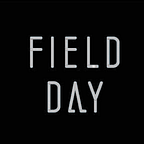Prairie Plant Companion: Botanist Seth McGee Teaches Prairie Plants with AR
Seth McGee has been passionate about the naming of things since his first scuba dive as an undergrad, when he discovered the complexity of the world that lives beneath the waves of the ocean.
“My first dive was mind blowing!” he says. “But being able to describe what I saw was impossible for me — I didn’t know the names of things.”
Wanting to talk about what he saw with his fellow-divers, Seth pored over fish guide books to learn the names of the underwater residents.
“Within two dives, I was seeing a lot more because I knew the names. My friends and I were able to share more of what we saw when we came up onto the boat.”
Several years (and a couple of thousand miles north of the ocean) later, Seth is still passionate about the naming of things: “When you know something’s name, you can learn more about it. When you begin to know it you start to care about it. When you care about it, you protect it.” This belief fuels his passion for teaching botany to his students.
Seth teaches the first semester of Biocore at the UW-Madison, an honors biology program that begins with a unit on Ecology. Throughout the semester, Biocore students conduct an independent research project, which often requires them to first identify a specific plant in the Biocore prairie to begin conducting experiments.
But too much class time was being devoted to learning plant anatomy for identification purposes. Plus, plant identification in the field was challenging. Not only are field guide books a pain to haul around, but many are organized around the plants’ bloom colors even though plants only flower a few weeks out of the year. Seth wanted a mobile, user-friendly solution.
“When the first iPhone came out, I saw its potential to make a multi-entry key for identification,” Seth said.
So in 2012, Seth connected with David Gagnon and Field Day to create an augmented reality app for students to take directly into the prairie that would help them easily identify the plants there. Originally named the “Prairie Plant Companion,” it has revolutionized the way students approach their research projects.
The Prairie Plant Companion
The app augments reality by displays a list of categories of plant characteristics, which students use to narrow down the plants for identification right there in the field. For instance, to identify a plant that is not flowering just yet, the student can skip the category about flowers and instead choose stem shape. The app displays images of stem shapes. The student selects the one that matches, and then moves on to leaf pattern. With each selection, the search results narrow until only a few options are left. The student can then simply look at the remaining options and match a photo of the plant to the one they’re trying to identify.
Seth has invested hundreds of hours in creating rich descriptions and pictures for the results pages. Students can learn what the plant was used for, if it’s edible or medicinal, even where its name comes from. As the app develops over time, the results will show what the plant will look like in various seasons.
“Now we don’t have to lug around all those books. It is the perfect application of the smartphone,” Seth says. “Students are asking great, involved questions. They collect data anytime. They bike out to the prairie without any instruction…they go on their own and come back with data. They never did that with the books. This augmented reality app allows them to do all this!”
Students Increase their Speed and Accuracy in Identifying Plants
But is the Prairie Plant Companion app merely a convenience, or is it actually more effective than traditional field guide books? Can it help a novice see the world thru the eyes of an expert? We were curious, so we did a study with three groups of Seth’s students to test its effectiveness, efficiency, and user experience.
One group used only the field guide books, the other used only the app, and the final group was able to use both. The group that used the field books correctly identified 2/10 of the plants — but those with only the app scored the highest. They identified 7/10 plants correctly and in half the time. (To see more about the study, watch the video here.)
“The students had greater comfort and a richer experience all around,” says Seth.
Update to PPC due in 2018
After the success of the original plant app in 2012, we’re upgrading it to include even more information about plants, their history, and uses. The app can be used by anyone — not just Biocore students — to make an identification key for any organism. Seth’s goal — and ours — is to engage people, to create community, and to crowd-source data.
The app now allows a user to take a geo-located photo of the app and identify if. Other users can verify whether the identification is correct.
Harnessing Citizen Scientists to Collect Phenology Data
“We could easily use this to create data for plant distribution maps, or phenology data. We could compare that photo to someone else’s photo of the plant in the same area 10 years ago,” says Seth. “Anyone could collect the data, and it would be good, quality data.” His students are citizen scientists who will produce data about phenology that scientists haven’t been close to producing yet. The contribution this will make to science is exciting.
While the ramifications for science are inspiring, at heart Seth is a teacher. “My larger objective for the tool is to allow users to nurture their curiosity and help them fall in love with nature.”
